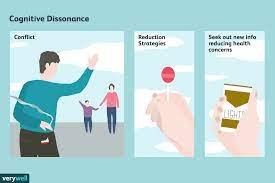In a recent development, blueberries and green beans have found themselves in the spotlight as they have been added to the Environmental Working Group’s (EWG) ‘Dirty Dozen’ produce list. This list highlights the fruits and vegetables that tend to have higher pesticide residues, sparking concerns about potential health risks associated with consuming these items. This article delves into the reasons behind this addition, the potential implications for consumers, and the steps that can be taken to minimize exposure to pesticides.
The Environmental Working Group’s ‘Dirty Dozen’ List
Understanding the Criteria
The ‘Dirty Dozen’ list, published annually by the EWG, identifies the top twelve fruits and vegetables that exhibit higher levels of pesticide residues. This list aims to inform consumers about produce items that might warrant more attention due to potential health risks associated with pesticide consumption.
Blueberries and Green Beans Joining the List
Blueberries and green beans have recently made their way onto this list due to increased concerns over pesticide contamination. While these foods offer numerous health benefits, their inclusion in the ‘Dirty Dozen’ raises questions about the safety of consuming conventionally grown versions.
The Impact on Consumers
Health Concerns and Pesticide Residues
Pesticides are used in conventional agriculture to protect crops from pests and diseases, but their residues can linger on the produce. High pesticide residues in food items can potentially have adverse health effects on consumers, ranging from minor irritations to more serious long-term health risks.
Making Informed Choices
With blueberries and green beans now part of the ‘Dirty Dozen,’ consumers might be reevaluating their produce choices. Opting for organic versions of these items could be a way to reduce pesticide exposure. Organic farming practices generally involve minimal or no use of synthetic pesticides, providing a potentially safer option for those concerned about pesticide residues.
Steps to Minimize Exposure
Washing and Peeling
Thoroughly washing and, in some cases, peeling fruits and vegetables can help reduce pesticide residues on the surface. While this may not eliminate all traces of pesticides, it can significantly reduce exposure.
Choosing Organic
As mentioned earlier, selecting organic produce can be a proactive step in reducing exposure to pesticides. Organic farming methods prioritize natural alternatives to synthetic chemicals, potentially leading to fewer residues on the final product.
Diversifying the Diet
Another strategy is to diversify the types of fruits and vegetables consumed. This can help mitigate the potential risk associated with consistently consuming produce items with higher pesticide residues.
Conclusion
The addition of blueberries and green beans to the EWG’s ‘Dirty Dozen’ list has shed light on the issue of pesticide residues in our food. While these foods offer undeniable health benefits, it’s essential to consider the potential risks associated with pesticide consumption. By staying informed, choosing organic options, and adopting healthier eating habits, consumers can take proactive steps toward reducing their exposure to pesticides and promoting overall well-being.








